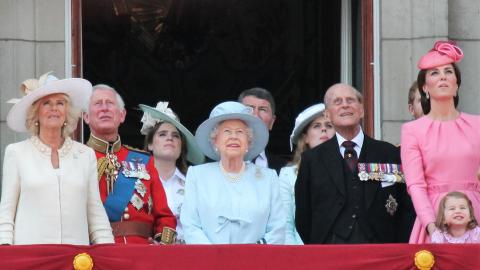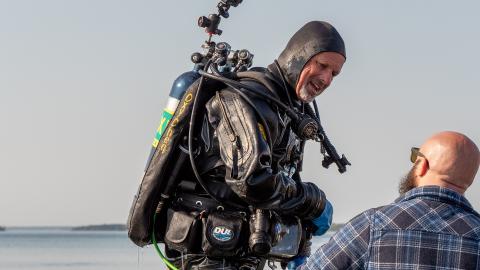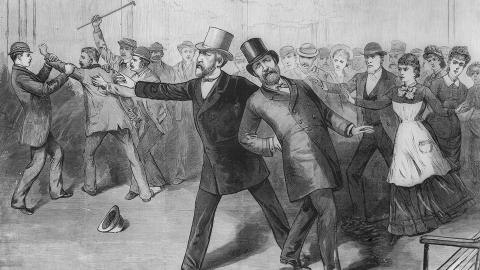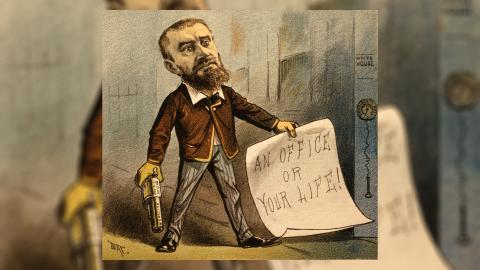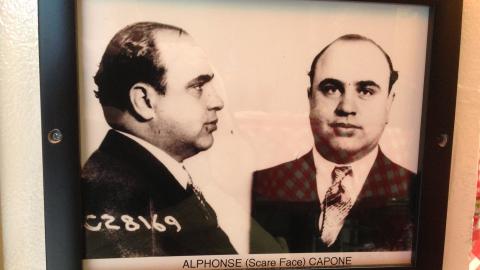John Dillinger is gunned down by the FBI
Outside Chicago's Biograph Theatre, notorious criminal John Dillinger, America's Public Enemy No. 1, is killed on this day in 1934 by a hail of bullets fired by federal agents. In a fiery bank-robbing career that lasted just over a year, Dillinger and his associates robbed 11 banks getting away with more than $300,000, broke out of jail, narrowly escaped capture multiple times and killed seven police officers and three federal agents. John Dillinger was born in Indianapolis, Indiana, in 1903. A juvenile delinquent, he was arrested in 1924 after a botched mugging. He pleaded guilty, hoping for clemency, but was sentenced to 10 to 20 years at Pendleton Reformatory.
While in prison, he made several failed escapes and was adopted by a group of professional bank robbers led by Harry Pierpont, who taught him the ways of their trade. When his friends were transferred to Indiana's tough Michigan City Prison, he requested to be transferred there too. In May 1933, Dillinger was paroled, and he met up with accomplices of Pierpont. Dillinger's plan was to raise enough funds to finance a prison break for Pierpont and the others, who then would take him on as a member of their elite robbery gang. In four months, Dillinger and his gang robbed four Indiana and Ohio banks, two grocery stores, and a drug store for a total of more than $40,000. He gained notoriety as a sharply dressed and athletic gunman who at one bank leapt over the high teller railing into the vault. With the help of two of Pierpont's women friends, Dillinger set up the jailbreak. Guns were bought and arranged to be smuggled into Michigan City Prison. Prison workers were bribed, and a safe house was set up.
On 22 September, however, just days before the jailbreak was scheduled to occur, Dillinger was arrested in Dayton, Ohio. Four days later, Pierpont and nine others broke out of Michigan City. Pierpont's gang robbed a bank in Ohio of $11,000 and on 12 October came to Ohio to free Dillinger from the Lima city jail. The Lima sheriff was killed during the successful breakout. On 30 October, the gang robbed a police arsenal, acquiring weapons, ammunition, and bulletproof vests. The Pierpont/Dillinger gang robbed banks in Indiana, Wisconsin, and Chicago of more than $130,000, a great fortune in the Depression era, and eluded the police in several close encounters. In January 1934, the gang headed to Tucson, Arizona, to lay low. By this time, four police officers had been killed and two wounded, and the Chicago police had established an elite squad to track down the fugitives. They were recognized in Tucson and on 25 January were captured without bloodshed. Dillinger was extradited to Indiana, arraigned for his 15 January murder of Indiana police officer William Patrick O'Malley, and held at Crown Point prison in Indiana, supposedly ‘escape-proof’.
On 3 March, while still awaiting trial, he executed his most celebrated escape. That morning, he brandished a gun and methodically began locking up the prison officials. The legend is that the weapon was a fake gun carved out of either wood or soap by Dillinger and blackened with shoe polish, but it may also have been a real gun smuggled into the prison by an associate. Whatever the case, Dillinger raided the prison arsenal, where he found two sub-machine guns, and then enlisted the aid of another prisoner, an African American man named Herbert Youngblood. Dillinger and Youngblood then made their way to the prison garage, where they stole the sheriff's car and calmly drove off – after pulling the ignition wires from the other vehicles parked there. Parting ways with Youngblood, Dillinger travelled to Chicago and formed a new gang featuring "Baby Face" Nelson, a psychopathic killer who used to work for Al Capone.
The new Dillinger gang robbed banks in South Dakota and Iowa, netting $101,500 and wounding two more police officers. The Federal Bureau of Investigation (FBI) joined the manhunt for Dillinger after he escaped from Crown Point, and on 31 March two FBI agents closed in on him at an apartment in St. Paul, Minnesota. Dillinger and an accomplice shot their way out. In April, the Dillinger gang went to hide out at a resort in Wisconsin, but the FBI was tipped off. On 22 April, the FBI stormed the resort. In a disastrous operation, three civilians were mistakenly shot by the FBI, one of whom died; Baby Face Nelson killed one agent, shot another, and critically wounded a police officer; and the entire Dillinger gang escaped. With two other gang members, Dillinger travelled to Chicago, surviving a shoot-out with Minnesota police along the way. In Chicago, he lived in a safe house and got a facelift to conceal his identity.
At some point, he also used acid to burn off his fingerprints. On 30 June, he participated in his last robbery, in South Bend, Indiana. The gang got away with about $30,000 at the cost of one officer killed, four civilians shot, and one gang member shot. In July, Anna Sage, a Romanian-born brothel madam in Chicago and friend of Dillinger's, agreed to cooperate with the FBI in exchange for leniency in an upcoming deportation hearing. She also hoped to cash in on the $10,000 bounty that had been put on his head. On 22 July, Sage and Dillinger went to see the gangster movie ‘Manhattan Melodrama’ (1934) at the Biograph Theatre around the corner from her house. Twenty FBI agents and police officers staked out the theatre and waited for him to emerge with Sage, who would be wearing an orange dress to identify herself. At 10:40 p.m., Dillinger came out. Sage's orange dress looked red under the Biograph's lights, which would earn her the nickname "the lady in red."
Dillinger was ordered to surrender, but he took off running. He made it as far as an alley at the end of the block before he was gunned down, allegedly because he pulled a gun. Two bystanders were wounded in the gunfire. Public Enemy No. 1, as FBI Director J. Edgar Hoover had dubbed him, was dead. Some researchers have claimed that it was another man, not Dillinger, that was killed outside the Biograph, citing autopsy findings on the corpse that allegedly contradict Dillinger's known medical records.

